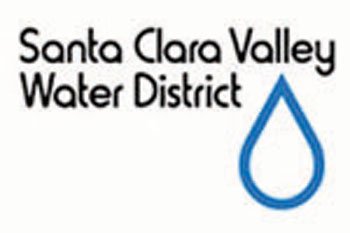Water bills in South County could increase if the Santa Clara
Valley Water District Board of Directors moves on an agenda item
that examines the feasibility of combining its two groundwater
zones into one zone encompassing all of Santa Clara County.
Water bills in South County could increase if the Santa Clara Valley Water District Board of Directors moves on an agenda item that examines the feasibility of combining its two groundwater zones into one zone encompassing all of Santa Clara County.
Since 1988, the county has been divided in to two zones, with North County paying $520 per acre foot while South County pays $275 per acre foot for nonagricultural water use.
Combining the zones, would mean one groundwater production charge across both zones, according to Senior Project Manager Darin Taylor.
He said the rate “would likely be slightly lower than the current North County municipal and industrial groundwater charge and significantly higher than the current South County municipal and industrial groundwater charge.”
If the rate was averaged among South and North county zones, it would amount to $397.50 per acre foot of municipal and industrial use – a 44 percent increase for South County customers. An acre foot is enough water to supply two families of five for one year.
North County, which begins north of Metcalf Road and reaches to the county line, uses three recycled water plants that mostly account for the charge discrepancy from South County, which uses no recycled water.
The majority of South County’s water use is drawn from the groundwater basin in Morgan Hill, San Martin and Gilroy. Water use is operated on individual plots of land by some 4,000 well owners, with the cities of Morgan Hill and Gilroy acting as wholesale water buyers from the district to sell to individual homes.
The district uses the pricing policy called a “pooling concept” where all water users benefit from multiple sources of water regardless of the cost within a zone.
Under one zone, water would be pooled in North and South county.
Charges have historically been much lower than the utility infrastructure of the North County where agriculture is rare and water is derived from the three treatment plants. The report suggests treated water could be shared among the zones if combined.
“It would be logical to seriously consider one groundwater charge zone if and when the district’s infrastructure is substantially interconnected such that water resources could be shared across both zones for the benefit of all users in both zones, and/or the level of service provided is equivalent in both zones,” the report states.
Taylor said the benefit of using treated water “would improve water supply reliability by helping to preserve the groundwater sub-basins,” he said.
District 4 director Larry Wilson, who has previously discussed a one-zone option, said Monday he didn’t think “anything will come from it” referring to the agenda item slated for Oct. 26’s board meeting.
“Everybody in South County is on groundwater, they’re not paying for the treated water. Now if they ever started using treated water, we could talk about it,” said Wilson, who represents Santa Clara, Campbell and West San Jose.
Currently, South County does not have a water treatment plant.
Don Gage, District 1 candidate and current Santa Clara County supervisor, said charging the farmers more, a result of the option, is the wrong move.
“I do not agree with that at all. There are two major reasons. No. 1, it’s going to cost South County more,” Gage said. “No. 2, if you want to preserve farming and open space and nobody can afford to farm it, it becomes unfarmable. You got to keep the rates low enough to keep it affordable.”
Candidate Tom Kruse, a Gilroy winery owner and former county supervisor candidate, said he’s against one county zone. He said South County water usage is totally different from the more industrial North County.
“I think to combine them would be a mistake. I liked to see them segregated in fairness to the South County residents,” Kruse said.
Cy Mann, South County’s own sitting at-large director, was sure of his stance.
“They’re crazy. No way you’re going to charge South County. They can say what they want, if they can get four votes, fine. In my opinion, they can pound salt,” said Mann, who is not seeking re-election.
According to the report by the district, the proposed change does fall in line with Proposition 218, an amendment enacted in 1996 to the California Constitution that requires voter approval to increase utility taxes. The water district is currently tangled in several legal battles over Prop 218 by individuals and businesses that claim when the district increased groundwater charges, it did so without voter approval. The water district argues that because it sells water wholesale to utility companies and its water is not considered a “property-related fee,” Prop 218 is not applicable.
Groundwater rates have remained at $275 per acre foot for the past three years. The last increase was in 2001. They’re expected to rise to $365 by 2020 in South County and $1,070 in North County. Revenue from the current rate is about $61 million this year.
On Wednesday, the water district released a report that Anderson Dam will need $100 million to be retrofitted in case a magnitude 7.2 earthquake strikes within 2 kilometers of the dam. The chance of that happening is less than 1 percent, according to the United States Geological Survey.
Groundwater charges could also increase higher than projected because of costs associated with a retrofitting of Anderson Dam, according to Taylor. The most recent projection allocated about $127 million during the next 10 years for that expense in South County, Taylor said.
That projection – produced earlier this year – included potential work on Anderson Dam, without an exact idea of how much the repairs would cost, Taylor explained. As the exact cost becomes less vague during the next few weeks, staff might know if it will affect current groundwater charge projections.
Groundwater production charges can be used to pay for construction, operation and maintenance of imported water facilities, imported water purchases, facilities to recharge groundwater, purification or treatment and any debt incurred for any of the above purposes.
***
North County Zone W-2 South County W-5
– 1998 $240 $108
– 1999 $260 $108
– 2000 $285 $115
– 2001 $310 $115
– 2002 $330 $130
– 2003 $340 $140
– 2004 $375 $160
– 2005 $405 $200
– 2006 $420 $215
– 2007 $435 $230
– 2008 $475 $255
– 2009 $520 $275
– 2010 $520 $275
– 2011* $520 $275
– 2012* $565 $285
– 2013* $615 $295
– 2014* $670 $305
– 2015* $735 $315
– 2016* $805 $325
– 2017* $880 $335
– 2018* $955 $345
– 2019* $1,015 $355
– 2020* $1,070 $365
*Recommended













